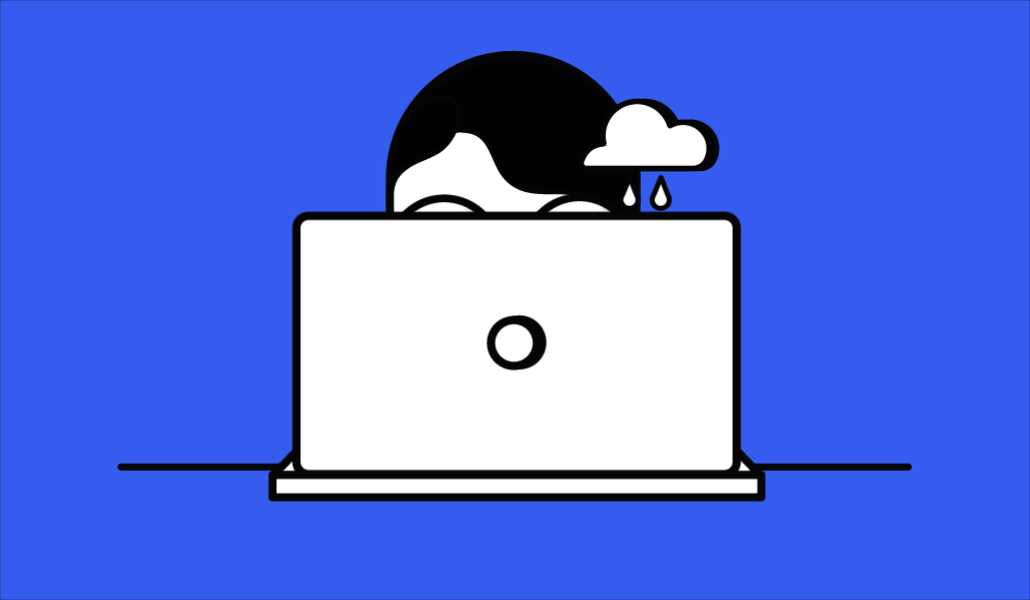Remote and hybrid working highlights the widening gulf between work-life conditions of senior and junior employees

How has the pandemic been for you and your career? The answer to this question will likely depend on your work status, the industry in which you operate and your level of seniority. The increasingly discussed “work-life balance” has long tipped heavily in favor of senior executives. However, alarming new research indicates that the gulf between the chiefs and the warriors has widened considerably in the last two years.
Almost two-thirds of 700 executives across seven industries and six countries, including the U.S. and the U.K., reported an improvement in their work-life balance since the onset of the pandemic, according to Economist Impact’s recent Work-Life Balance Barometer. But 41% of 4,000 employees, at manager level or below, said it’s worsened.
Tom Cuthell, director of the Future of Work Summit, part of London Tech Week in June, isn’t shocked by these results. “For some, it was easier to separate working remotely and home life due to privileged circumstances such as a separate study space or garden office, fast wifi connections, and access to all the digital hardware required to work remotely,” he said.
This paints a very different picture to “the many who used their kitchen table as their office space, frequently ran into wifi connection issues and only had access to a small laptop,” he added.
It is perhaps too simplistic, though, to compare the experiences of executives and lower-level workers. “Childcare, for example, affects a range of employees, and during the pandemic when nurseries and schools closed, all parents faced this problem,” said Cuthell. Organizations can offset these challenges by providing benefits like quality childcare to staff, he added — a trend already gaining traction in the U.S.
Frontline versus office workers
Not everyone has found working from home the luxury that some have, particularly those in frontline and field roles which aren’t office-based. That’s often created a gulf between those workers and their senior leaders, according to David Hunt, founder, and CEO of Hyperion Executive Search, a specialist recruitment firm. “There is a physical requirement to be in a certain place that inevitably creates a divide between leadership, who are often working from home, a coffee shop, or even a beach somewhere — yet some demand that workers are in the office five days a week. The higher up the career chain you go, the more this inequality is the case,” he said.
The Economist Impact’s statistics also tally with research run by performance marketing agency Journey Further. Its data showed that during the pandemic, employees struggled to differentiate their work-life from their home-life when circumstances merged the two. “We’ve identified that although we — and other businesses — may have flexible working, it can be harder for junior people to take ownership of their schedule,” said global CEO and founder Robin Skidmore.
With hybrid working set to be part of most organizations’ future models, the divide between junior staff and senior executives’ working conditions isn’t likely to narrow anytime soon — a factor not helped by soaring living costs. Plus, many junior staff are working doubly hard to prove what they’re doing all day at home, believes Amrit Sandhar, founder and CEO of The Engagement Coach, which provides training services on how to engage employees. “This pressure to demonstrate the impact they are having may mean they are working for 10 to 12 hours a day, with little mobility, staring at their screens, impacting their well-being,” he said.
The right to disconnect
Last February, a Stamford University report was the first to look in-depth at so-called Zoom fatigue. Spoiler: too many video calls are bad for worker well-being. Sam Liang, CEO, and co-founder of AI-transcription software company Otter.ai, wonders if leaders have heeded the warnings. Research the company conducted alongside 3Gem, published last October, revealed that “overworking in a remote environment can lead to poor mental health,” particularly when it comes to in-person or virtual meetings.
“Some 37% of Brits said two meetings in a row make them feel low on energy, while 61% would rather visit the dentist than attend back-to-back calls,” said Liang.
Certainly, those at the top tend to have more autonomy over managing their time. Still, executives must implement better well-being policies, or risk losing talent, argues Rita Trehan, founder of global transformation consultancy DARE Worldwide. “Our research of 1,000 leaders shows employers and their staff are not at all aligned on business priorities and direction,” she said. “The pandemic has widened this gap, leading to toxic expectations of the staff.”
Portugal has taken this seriously, making it illegal for bosses to contact their staff outside specified working hours. Meanwhile, in August, the future-of-work think tank Autonomy found that U.K. workers were suffering an “epidemic of hidden overtime” and called for amendments to be made to the Employment Rights Act 1996, guaranteeing staff “the right to disconnect.”
But it’s not just lower-level workers who need to disconnect, warned Simon O’Kane, head of international at Asana, a global work management platform. “Our data surveying 13,000 global knowledge workers found staggering levels of burnout across all levels of the business, showing it is still a universal problem that has been exacerbated by remote work for everyone,” he said.
Among survey respondents, 71% experienced burnout at least once in 2020, with 46% of respondents cited being overworked as a vital contributing factor, and 32% not being able to switch off and disconnect from work.
San Francisco-based Michael Rico, chief people officer of cloud software platform ActiveCampaign, believes leadership teams need to encourage their teams to prioritize their personal lives. “If executives are working around the clock and not taking time off, it sends the message that their teams should be copying that same behavior,” he said.
